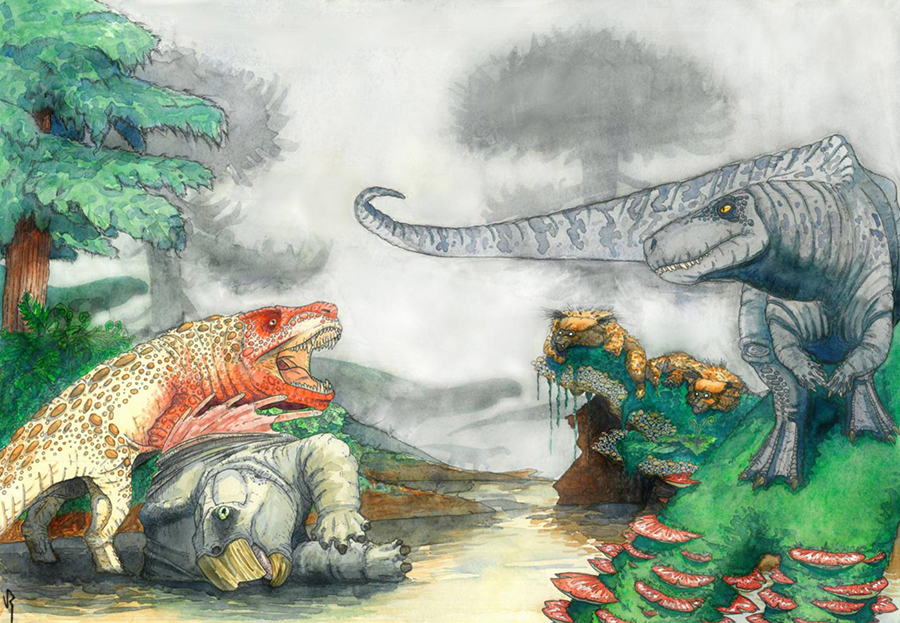Rauisuchians: Croc-Like Carnivores Terrorized Triassic Dinosaurs in Southern Africa 210 Million Years Ago

Rauisuchians — predatory crocodile-like creatures that lived during the Triassic period, some 210 million years ago — preyed on early herbivorous dinosaurs and mammal relatives, according to a new study.
Rauisuchians are a group of massive Triassic archosaurs. These animals had huge skulls full of serrated, curved teeth, and a diversity of body shapes and sizes.
They are closely related to crocodiles as we know them today, and are generally considered to have gone extinct in the end-Triassic mass extinction.
“In the Triassic period, rauisuchians were widespread and their fossils are known from all continents except Antarctica,” said Rick Tolchard, a student in the Evolutionary Studies Institute and School of Geosciences at the University of the Witwatersrand in Johannesburg, South Africa.
“They went extinct about 200 million years ago, paving the way for dinosaurs to become the dominant large land animals.”
In the study, Tolchard and colleagues analyzed rauisuchian fossils — teeth, pieces of jaws, hind limbs and body armor — from the Elliot Formation of South Africa and Lesotho.
The specimens included some of the largest carnivorous members of the group, possibly up to 33 feet (10 m) long.
“These ancient fossils provide us with evidence of how at least two predator species hunted these vegetarian dinosaurs 210 million years ago,” Tolchard said.
“It is amazing to follow the clues left behind in fossilized teeth, jaws, limbs and other fossils to help us tell the ancient story of life in southern Africa.”
The study shows that the rauisuchians from the Elliot Formation were some of the latest-surviving members of their group, and that when they were alive, they were thriving close to the Antarctic Circle — the theoretical limit for their physiology.
“This study demonstrates the value of re-examining old specimens, and now we finally know what was preying on all those herbivorous dinosaurs,” said co-author Professor Jonah Choiniere, from the Wits Evolutionary Studies Institute.
The team’s paper will be published in the December 2019 issue of the Journal of African Earth Sciences.
_____
Frederick Tolchard et al. 2019. ‘Rauisuchian’ material from the lower Elliot Formation of South Africa and Lesotho: Implications for Late Triassic biogeography and biostratigraphy. Journal of African Earth Sciences 160: 103610; doi: 10.1016/j.jafrearsci.2019.103610
Source: www.sci-news.com








